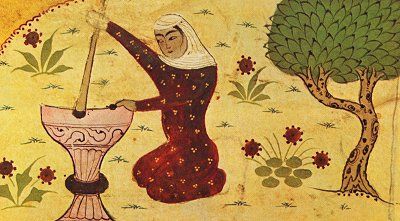These days you can not help but hearing about vitamin D and it's many benefits. I wanted to do some research of my own since the first thing my doctor tells me when she sees me is to take at least 1000IU a day.
Here are outline of some of the new research and studies about Vitamin D:
Here are outline of some of the new research and studies about Vitamin D:
Low Vitamin D Levels Tied to Obesity in Kids.
Vitamin D May Prevent Serious Respiratory Disease in newborn.
Mom's Vitamin D Levels Linked to Language Problems in Kids.
Low Vitamin D Levels Linked to More Aggressive Breast cancer.
MS in Blacks Linked to Low Vitamin D.
Vitamin D will cure menstruation cramps.
Vitamin D is a nutrient found in some foods that is needed for health and to maintain strong bones. It does so by helping the body absorb calcium (one of bone's main building blocks) from food and supplements. People who get too little vitamin D may develop soft, thin, and brittle bones, a condition known as rickets in children and osteomalacia in adults.
Vitamin D is important to the body in many other ways as well. Muscles need it to move, for example, nerves need it to carry messages between the brain and every body part, and the immune system needs vitamin D to fight off invading bacteria and viruses. Together with calcium, vitamin D also helps protect older adults from osteoporosis. Vitamin D is found in cells throughout the body.
Very few foods naturally have vitamin D. Fortified foods provide most of the vitamin D in American diets.
Vitamin D May Prevent Serious Respiratory Disease in newborn.
Mom's Vitamin D Levels Linked to Language Problems in Kids.
Low Vitamin D Levels Linked to More Aggressive Breast cancer.
MS in Blacks Linked to Low Vitamin D.
Vitamin D will cure menstruation cramps.
What is vitamin D and what does it do?
Vitamin D is a nutrient found in some foods that is needed for health and to maintain strong bones. It does so by helping the body absorb calcium (one of bone's main building blocks) from food and supplements. People who get too little vitamin D may develop soft, thin, and brittle bones, a condition known as rickets in children and osteomalacia in adults.
Vitamin D is important to the body in many other ways as well. Muscles need it to move, for example, nerves need it to carry messages between the brain and every body part, and the immune system needs vitamin D to fight off invading bacteria and viruses. Together with calcium, vitamin D also helps protect older adults from osteoporosis. Vitamin D is found in cells throughout the body.
How much vitamin D do we need?
The amount of vitamin D we need each day depends on our age. Average daily recommended amounts from the Food and Nutrition Board (a national group of experts) for different ages are listed below in International Units (IU):- Birth to 12 months 400 IU
- Children1–13 years 600 IU
- Teens 14–18 years 600 IU
- Adults 19–70 years 600 IU
- Adults 71 years and older 800 IU
- Pregnant and breastfeeding women 600 IU
What foods provide vitamin D?
Very few foods naturally have vitamin D. Fortified foods provide most of the vitamin D in American diets.
- Fatty fish such as salmon, tuna, and mackerel are among the best sources.
- Beef liver, cheese, and egg yolks provide small amounts.
- Mushrooms provide some vitamin D. In some mushrooms that are newly available in stores, the vitamin D content is being boosted by exposing these mushrooms to ultraviolet light.
- Almost all of the U.S. milk supply is fortified with 400 IU of vitamin D per quart. But foods made from milk, like cheese and ice cream, are usually not fortified.
- Vitamin D is added to many breakfast cereals and to some brands of orange juice, yogurt, margarine, and soy beverages; check the labels.
Can we get vitamin D from the sun?
The body makes vitamin D when skin is directly exposed to the sun, and most people meet at least some of their vitamin D needs this way. Skin exposed to sunshine indoors through a window will not produce vitamin D. Cloudy days, shade, and having dark-colored skin also cut down on the amount of vitamin D the skin makes.
However, despite the importance of the sun to vitamin D synthesis, it is prudent to limit exposure of skin to sunlight in order to lower the risk for skin cancer. When out in the sun for more than a few minutes, wear protective clothing and apply sunscreen with an SPF (sun protection factor) of 8 or more. Tanning beds also cause the skin to make vitamin D, but pose similar risks for skin cancer.
People who avoid the sun or who cover their bodies with sunscreen or clothing should include good sources of vitamin D in their diets or take a supplement. Recommended intakes of vitamin D are set on the assumption of little sun exposure.
People who avoid the sun or who cover their bodies with sunscreen or clothing should include good sources of vitamin D in their diets or take a supplement. Recommended intakes of vitamin D are set on the assumption of little sun exposure.




Hey keep posting such good and meaningful articles.
ReplyDelete